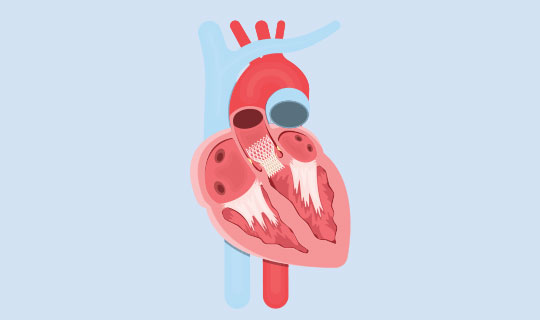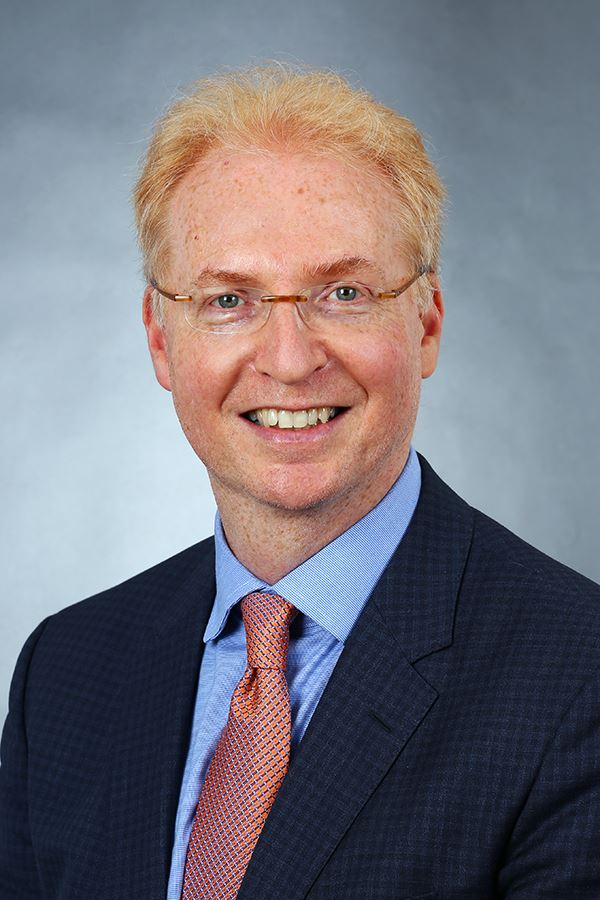“The nurses and everyone at both RWJUH Rahway and NBI were fantastic."

As a commercial paralegal for a busy law firm, Linda Kurak is always in motion. “I assist attorneys in coordinating closings, reviewing title commitments and preparing documents to keep everything moving smoothly,” she says.
Early last year, however, the 73-year-old Iselin resident began to develop signs of fatigue. She wasn’t sleeping well and sometimes had trouble negotiating the front step to her house.
She figured the cause was related to her heart murmur, which she had lived with her whole life. “I was struggling to get through each day, and when I would go to bed, I could actually hear my murmur,” she says.
Still, Linda put off seeking treatment. Then on April 1, 2023, she felt pain in her chest that radiated down her left arm. She headed to an urgent care clinic near her home. “They did an EKG and told me I needed to go to an emergency room right away,” Linda says. She immediately headed to Robert Wood Johnson University Hospital Rahway (RWJUH).
Groundbreaking Treatment

Inside the RWJUH Rahway Emergency Department, doctors rushed to stabilize Linda and treat her symptoms. Cardiologist Howard Levitt, MD, worked to find the root cause of her problem. “Her murmur was consistent with a condition called aortic stenosis,” says Dr. Levitt, Division Director, Cardiology, at RWJUH Rahway.
Aortic stenosis occurs when the aortic valve—the largest of the heart’s four valves—begins to narrow, restricting blood flow to the rest of the body. “The degree of narrowing can be mild, moderate, severe or critical,” Dr. Levitt says. Linda’s stenosis had reached the critical level.
In the past, open heart surgery was the only treatment for severe aortic stenosis. Today, patients like Linda can benefit from a newer and less invasive approach called transcatheter aortic valve replacement (TAVR).
During a TAVR procedure—performed in a cardiac catheterization laboratory— an interventional cardiologist inserts a catheter into an artery, usually in the groin, then threads a replacement valve through the catheter up into the heart. Once the new valve is in position, the doctor opens it using the catheter, restoring proper blood flow.
“TAVR was initially just used in patients who were too high-risk for open heart surgery, but over time, it’s proven to be effective for people at moderate and low risk, too,” Dr. Levitt says. “In Linda’s case, I knew TAVR would allow her to get back on her feet and recover quickly.”
Coordinated Care

As a patient at RWJUH Rahway, Linda had seamless and convenient access to the highly specialized TAVR procedure at Newark Beth Israel Medical Center (NBI). Both hospitals are part of the RWJBarnabas Health system, which also meant that Linda could return to RWJUH Rahway and receive coordinated follow-up care locally.
“We operate as one Division of Cardiology that works across two locations,” Dr. Levitt says.
As soon as Linda received the go-ahead for TAVR, Dr. Levitt and his team arranged for transportation by ambulance to NBI. “We made it there in just 12 minutes,” Linda says. Interventional cardiologist Sergio Waxman, MD, MBA, Chief of the Division of Cardiology at NBI, performed Linda’s TAVR procedure. She returned home the next day.
“The nurses and everyone at both RWJUH Rahway and NBI were fantastic,” Linda says. “Everybody was so nice. And Dr. Levitt took really good care of me. He’s very easygoing and personable. He addressed all of my concerns and made me feel comfortable.” Just two weeks after undergoing the TAVR procedure, Linda was back to work. In the months since, she has faithfully attended follow-up visits at RWJUH Rahway’s outpatient heart clinic, which offers both scheduled and walk-in appointments.
She also has made a few lifestyle changes to keep her heart healthier in the long term. “I don’t eat any more fried foods or fat, and I follow a low-sodium diet,” she says. “I cut down on the sweets, too.”
Linda’s experience taught her a valuable lesson that she now shares with others. “When your body tells you something, listen,” she says. “I should have sought care for my heart murmur sooner. I’m fortunate everything worked out the way it did.”
Aortic Stenosis: A Subtle Disease
While aortic stenosis is the most common form of heart valve disease, it often shows only mild or moderate symptoms and can be hard to diagnose. “It tends to come on gradually as people age,” says Howard Levitt, MD, Division Director, Cardiology, at Robert Wood Johnson University Hospital Rahway.
Common symptoms in addition to having a heart murmur include shortness of breath, fatigue and dizziness. “The problem is that most people who experience these symptoms chalk them up to aging or being out of shape, so they don’t seek help,” says Dr. Levitt. “That means they may not get care until it’s an emergency.”
If you experience any of the symptoms of aortic stenosis—or live with a murmur—seek care from a cardiologist.
Learn more about transcatheter aortic valve replacement (TAVR) at RWJBarnabas Health.
